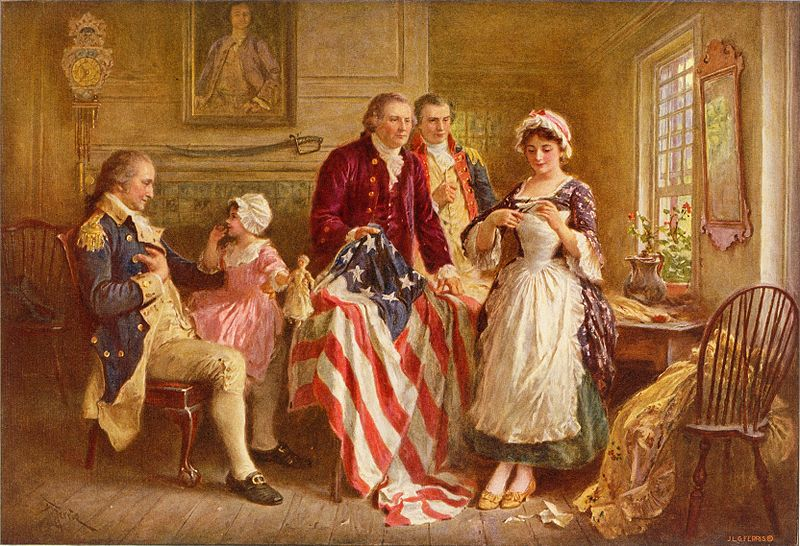When we think of the American Revolution, names like George Washington, Thomas Jefferson, and Benjamin Franklin dominate the narrative. But what about the women? While the men fought on the battlefield, the women of the Revolution were far from passive. They were mothers, wives, daughters, and even spies who played pivotal roles in shaping the course of history. From managing farms to fundraising for troops, these women proved that the fight for independence was a collective effort. As British General Cornwallis famously quipped, even if he defeated every man in America, the war would continue—because he’d still have to contend with the women.

Abigail Adams: The Pen Behind the Revolution
If there’s one name that stands out among the women of the Revolution, it’s Abigail Adams. Wife of John Adams, the second U.S. president, and mother of John Quincy Adams, the sixth president, Abigail was more than just a presidential spouse. She was a brilliant writer, a sharp political mind, and an early advocate for women’s rights.
Abigail’s letters and diaries provide some of the most vivid accounts of the Revolutionary era. Her correspondence with her husband and other political leaders offers a window into the struggles and triumphs of the time. In 1776, as the Continental Congress debated independence, Abigail famously wrote to John, urging him to “remember the ladies” in the new laws being drafted. She warned that if women were not given a voice, they would “foment a rebellion” of their own. While John Adams and his fellow “founding fathers” may have dismissed her plea, Abigail’s words resonate as an early call for gender equality.
Martha Washington: The General’s Backbone
Martha Washington, the wife of George Washington, was another pivotal figure in the Revolution. Unlike Abigail, Martha was not a political thinker or writer. She was, however, the emotional anchor for her husband and the Continental Army. During the harsh winters at Valley Forge, Martha traveled to the camps to support the troops, mending clothes, tending to the sick, and boosting morale. Her presence was a source of comfort not only for George but for the entire army.
Martha’s role extended beyond the battlefield. She managed the Washington estate, Mount Vernon, in her husband’s absence, ensuring that the family’s finances remained stable. Her ability to balance domestic duties with her public role as the “First Lady” of the Continental Army set a precedent for future presidential spouses.
Esther Reed: The Philanthropist of the Revolution
Esther Reed, the wife of Pennsylvania Governor Joseph Reed, was another influential woman of the Revolution. Born in England, Esther moved to America after marrying Joseph and quickly became a passionate supporter of the patriot cause. In 1780, she penned an essay titled The Sentiments of an American Woman, which called on women to contribute to the war effort by raising funds for the troops.
Esther organized the “Ladies Association of Philadelphia,” which successfully raised over 300,000inContinentalcurrency—equivalenttomorethan300,000inContinentalcurrency—equivalenttomorethan7 million today. This money was used to provide soldiers with much-needed supplies, such as shirts, which were embroidered with the names of the women who made them. Esther’s efforts not only provided material support but also symbolized the unity and resilience of American women.
Deborah Sampson: The Soldier in Disguise
Not all women supported the war from the sidelines. Deborah Sampson, a schoolteacher from Massachusetts, disguised herself as a man and enlisted in the Continental Army under the name Robert Shurtliff. For three years, she fought alongside her male counterparts, even sustaining injuries in battle. Her true identity was only discovered when she fell ill and was hospitalized. Despite the revelation, Deborah was honorably discharged and later received a military pension for her service.
Deborah’s story is just one of many examples of women who took up arms during the Revolution. Whether motivated by love, patriotism, or a desire to prove their worth, these women demonstrated that courage knows no gender.
The Legacy of Revolutionary Women
The contributions of these women—and countless others—were instrumental in the success of the American Revolution. They managed households, raised funds, nursed the wounded, and even fought on the front lines. Their efforts challenged traditional gender roles and laid the groundwork for future generations of women to demand equality and representation.
Today, the legacy of these revolutionary women lives on. From the suffrage movement to modern-day activism, the spirit of Abigail Adams, Martha Washington, Esther Reed, and Deborah Sampson continues to inspire. As we celebrate the birth of the United States, let us not forget the women who helped make it possible. Their stories remind us that the fight for freedom and equality is a collective effort—one that requires the courage and determination of all, regardless of gender.
In the words of Abigail Adams, “Remember the ladies.” And indeed, we do.

No comments yet.